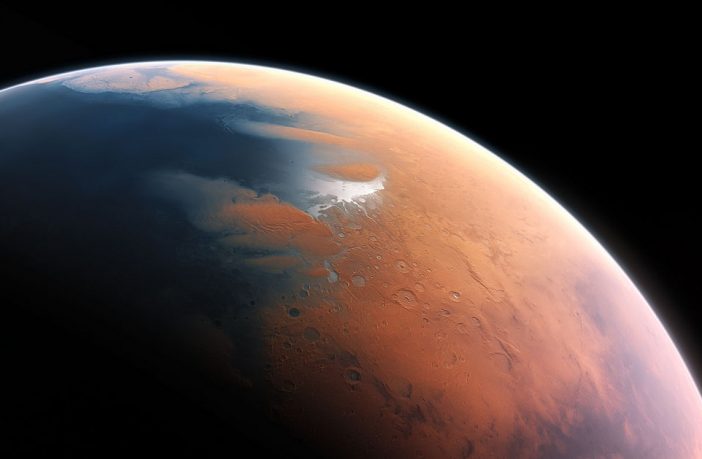It has been an amazing week for the world of Astronomy. With the discovery of an Earth-sized planet orbiting our nearest stellar neighbour within a zone that could support life, we are again forced to question whether we are alone. Now, a team of scientists from The Open University and several other UK and US institutes have used satellite imaging of the surface of the planet Mars and discovered that nearly four billion years ago, the Martian climate was warm enough for rivers to flow.
Giant Martian rivers
The study*, which was published in the Geology Journal, identified 17,000km of former river channels in an area roughly the size of Brazil known as Arabia Terra. Examining satellite images of a much higher resolution than previously in this region – six metres compared to 100 metres per pixel – the team discovered the existence of many systems of fossilised riverbeds. The results provide geological evidence that water once flowed on the surface of Mars.
Potential to support life
With the discovery that large quantities of water flowed on the surface, the potential that Mars could have hosted life increases dramatically, as Senior Lecturer and co-author of the research paper, Dr Matthew Balme, explains: “As a river dries up, material deposited on the riverbed remains – and these riverbeds can be very resistant to erosion. As the surrounding area is eroded away by wind, the more resistant material left in the riverbed forms a fossilised or ‘inverted’ river channel; it is this we can see from the satellite imaging.
“These ancient Martian flood plains, which resemble features on Earth in places like Egypt and Oman, are great for exploring for evidence of past life. In fact, one of these inverted channels called Aram Dorsum is a candidate landing site for the European Space Agency (ESA) ExoMars Rover mission, which will launch in 2020 to search for past life on the planet.”
Future research on Mars
Scientists are planning an even closer study of Aram Dorsum and the wider Arabia Terra region using data from the Mars Reconnaissance Orbiter (MRO) High Resolution Imaging Science Experiment (HiRISE).
*The study was funded by the UK Science and Technology Facilities Council (STFC) and the UK Space Agency (UKSA).
Photo by randyfmcdonald 



